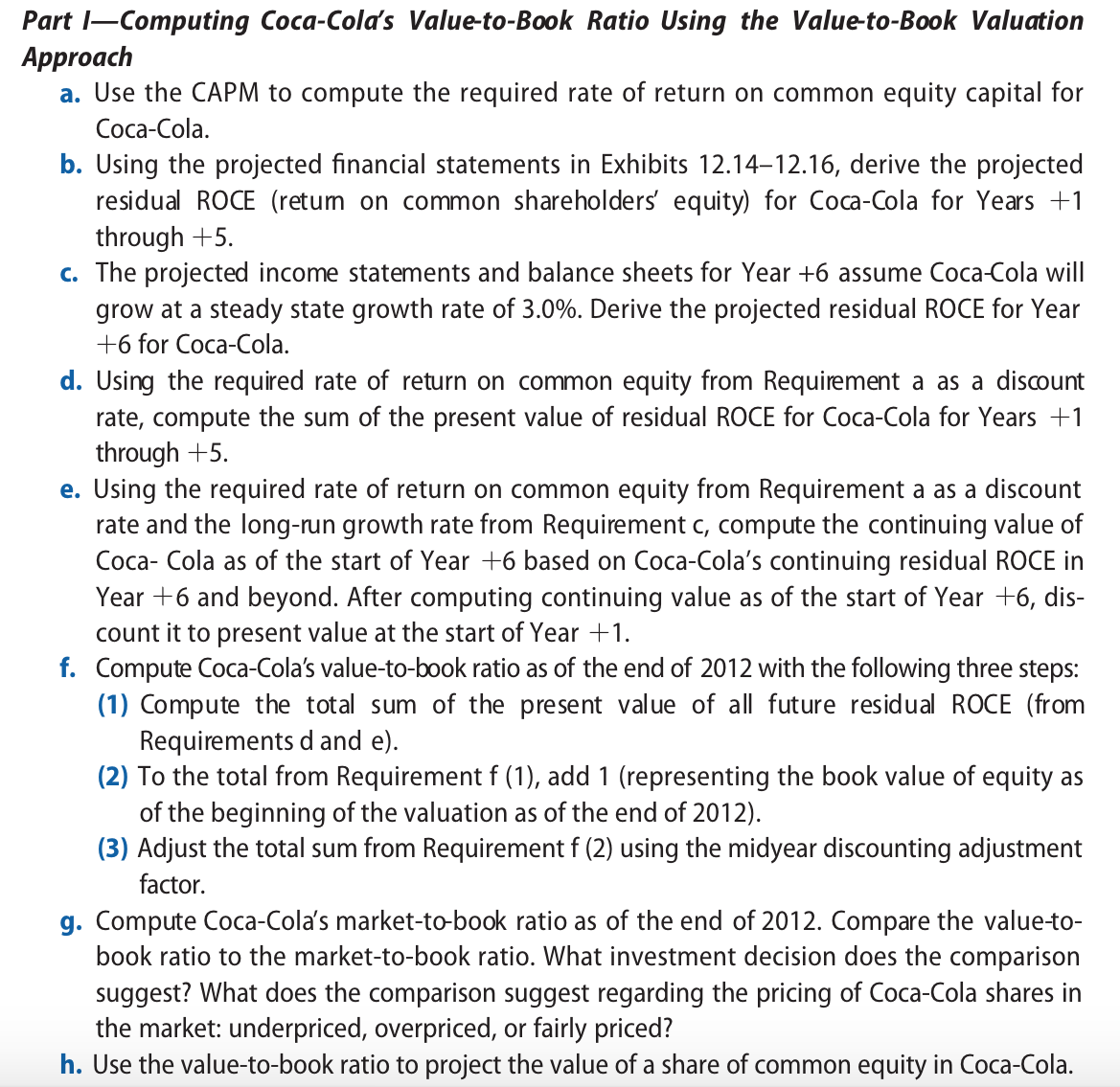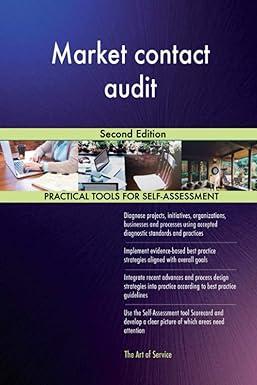
Computing Coca-Cola's Value-to-Book Ratio Using the Value-to-Book Valuation Approach Use the CAPM to compute the required rate of return on common equity capital for Coca-Cola. Using the projected financial statements in Exhibits 12.14-12.16, derive the projected residual ROCE (return on common shareholders' equity) for Coca-Cola for Years +1 through +5. The projected income statements and balance sheets for Year +6 assume Coca-Cola will grow at a steady state growth rate of 3.0%. Derive the projected residual ROCE for Year +6 for Coca-Cola. Using the required rate of return on common equity from Requirement a as a discount rate, compute the sum of the present value of residual ROCE for Coca-Cola for Years +1 through +5. Using the required rate of return on common equity from Requirement a as a discount rate and the long-run growth rate from Requirement c, compute the continuing value of Coca- Cola as of the start of Year +6 based on Coca-Cola's continuing residual ROCE in Year +6 and beyond. After computing continuing value as of the start of Year +6, discount it to present value at the start of Year +1. Compute Coca-Cola's value-to-book ratio as of the end of 2012 with the following three steps: Compute the total sum of the present value of all future residual ROCE (from Requirements d and e). To the total from Requirement f (1), add 1 (representing the book value of equity as of the beginning of the valuation as of the end of 2012). Adjust the total sum from Requirement f (2) using the midyear discounting adjustment factor. Compute Coca-Cola's market-to-book ratio as of the end of 2012. Compare the value-to-book ratio to the market-to-book ratio. What investment decision does the comparison suggest? What does the comparison suggest regarding the pricing of Coca-Cola shares in the market: underpriced, overpriced, or fairly priced? Use the value-to-book ratio to project the value of a share of common equity in Coca-Cola. Computing Coca-Cola's Value-to-Book Ratio Using the Value-to-Book Valuation Approach Use the CAPM to compute the required rate of return on common equity capital for Coca-Cola. Using the projected financial statements in Exhibits 12.14-12.16, derive the projected residual ROCE (return on common shareholders' equity) for Coca-Cola for Years +1 through +5. The projected income statements and balance sheets for Year +6 assume Coca-Cola will grow at a steady state growth rate of 3.0%. Derive the projected residual ROCE for Year +6 for Coca-Cola. Using the required rate of return on common equity from Requirement a as a discount rate, compute the sum of the present value of residual ROCE for Coca-Cola for Years +1 through +5. Using the required rate of return on common equity from Requirement a as a discount rate and the long-run growth rate from Requirement c, compute the continuing value of Coca- Cola as of the start of Year +6 based on Coca-Cola's continuing residual ROCE in Year +6 and beyond. After computing continuing value as of the start of Year +6, discount it to present value at the start of Year +1. Compute Coca-Cola's value-to-book ratio as of the end of 2012 with the following three steps: Compute the total sum of the present value of all future residual ROCE (from Requirements d and e). To the total from Requirement f (1), add 1 (representing the book value of equity as of the beginning of the valuation as of the end of 2012). Adjust the total sum from Requirement f (2) using the midyear discounting adjustment factor. Compute Coca-Cola's market-to-book ratio as of the end of 2012. Compare the value-to-book ratio to the market-to-book ratio. What investment decision does the comparison suggest? What does the comparison suggest regarding the pricing of Coca-Cola shares in the market: underpriced, overpriced, or fairly priced? Use the value-to-book ratio to project the value of a share of common equity in Coca-Cola







